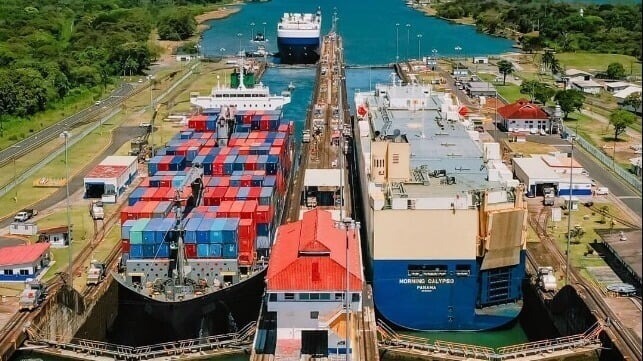Panama Canal Continues Progress Toward Normal Operations

After experiencing one of the worst droughts in its history, Panama highlights it is continuing to move in the right direction restoring capacity at the Panama Canal. The Panama Canal Authority reports it will add back further slots for daily transits in the coming weeks bringing it close to previous levels and a nearly full operating depth.
At the end of July, the Panama Canal Authority increased the total number of transits to 34 per day. Speaking this week with Reuters, Deputy Administrator Ilya Espino highlighted that they will add one additional slot next week, bringing as of August 5 the total to 35 daily transits. Then in September, another slot will be added to bring the total to 36.
The Panama Canal Authority has previously said its target was to return to 36 to 39 daily transits between the newer Neopanamax and original Panamax locks. At the peak of the water crisis, the Panama Canal Authority had lowered the transits to a total of 22. They had mapped a further step to 18 daily transits but were never required to implement those restrictions.
Espino highlighted that normally the Authority is only restricting vessel draft during the summer months. They are still holding a cap on the number of transits as well but expect due to efforts and the early return of the rainy season the situation will continue to ease.
Currently, the draft is set at 46 feet which permits most of the large vessels to proceed as normal at the Canal. Earlier this year, with the draft restricted LNG carriers were diverting, and large containerships were only able to carry partial loads. Some were transshipping boxes across the Isthmus by rail. Maersk for a time was substituting a double-ship deployment with boxes transferred from ship to ship using the rail links to avoid having to make the transit.
Water levels in Gatun Lake, which is the reservoir for the Canal, and also supplies drinking water to the population, have been rising with the onset of the rainy season, which typically continues for several more months. Today, the water level in the Gatun Reservoir is at 84 feet and the Authority is expecting based on weather forecasts that it will rise at least two more feet by October. It peaked at 88 feet in December 2022 but had fallen to 79 feet as of June 2023.
The Panama Canal Authority implemented various water-saving steps including recycling water and double locking where two smaller vessels made the transit in tandem. That helped along with the restrictions on the number of transits and vessel draft to maintain the water level at 79 to 80 feet. However, it also meant that there were longer waits and a pile-up in the number of vessels queuing for the transit.
While the Canal is nearly back to normal on the number of daily transits, the draft is still down currently four feet from the peak. At the beginning of 2023, the Panama Canal was accommodating vessels with a 50-foot draft.
Longer-term, the Authority has mapped out a plan to create a second reservoir to help it manage the impact of climate change. The development of railroads, including efforts in Mexico, is also being presented as an alternative route for cargo.
No comments:
Post a Comment